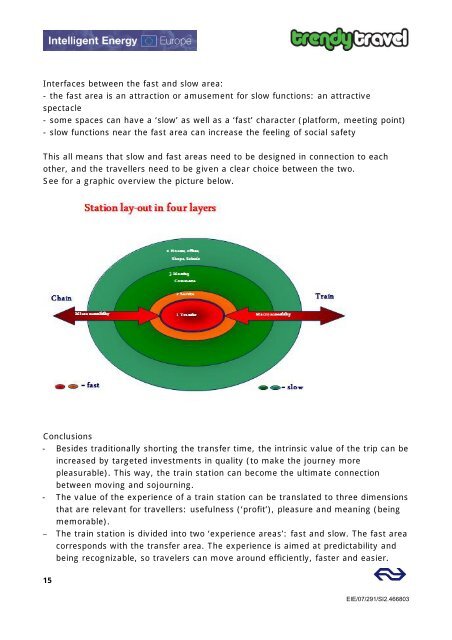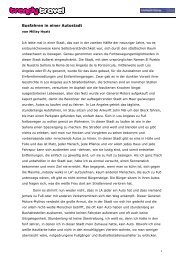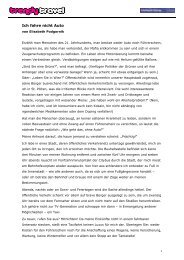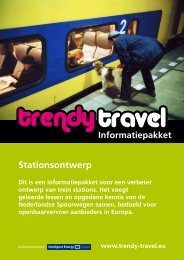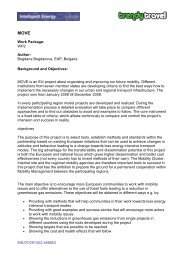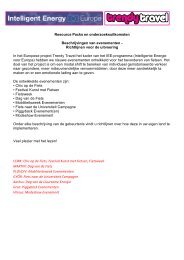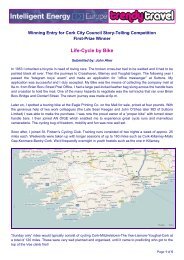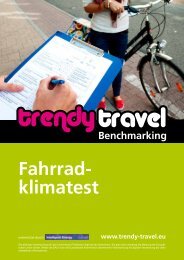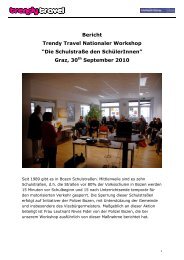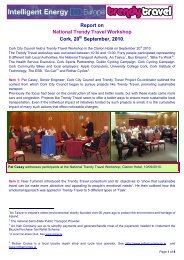Resource Pack: Railway Station Design - Eltis
Resource Pack: Railway Station Design - Eltis
Resource Pack: Railway Station Design - Eltis
You also want an ePaper? Increase the reach of your titles
YUMPU automatically turns print PDFs into web optimized ePapers that Google loves.
Interfaces between the fast and slow area:<br />
- the fast area is an attraction or amusement for slow functions: an attractive<br />
spectacle<br />
- some spaces can have a ‘slow’ as well as a ‘fast’ character (platform, meeting point)<br />
- slow functions near the fast area can increase the feeling of social safety<br />
This all means that slow and fast areas need to be designed in connection to each<br />
other, and the travellers need to be given a clear choice between the two.<br />
See for a graphic overview the picture below.<br />
Conclusions<br />
- Besides traditionally shorting the transfer time, the intrinsic value of the trip can be<br />
increased by targeted investments in quality (to make the journey more<br />
pleasurable). This way, the train station can become the ultimate connection<br />
between moving and sojourning.<br />
- The value of the experience of a train station can be translated to three dimensions<br />
that are relevant for travellers: usefulness (‘profit’), pleasure and meaning (being<br />
memorable).<br />
– The train station is divided into two ‘experience areas’: fast and slow. The fast area<br />
corresponds with the transfer area. The experience is aimed at predictability and<br />
being recognizable, so travelers can move around efficiently, faster and easier.<br />
15<br />
EIE/07/291/SI2.466803


